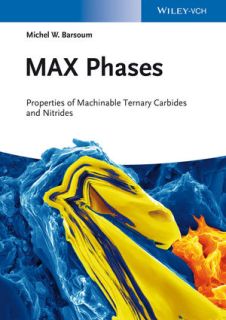Science
Related: About this forumMaterials Science Based on Biological Mimicry.
Last week, while on a long trip, I set out to read a very nice monograph by a very exciting scientist, Michel Barsoum, of Drexel University, a world leader in the development of "MAX Phases," a class of materials that exhibit properties of both metals and ceramics, making them potentially of great technological importance. I've been collecting and reading papers about this set of materials because of their potential use as refractory materials that can withstand neutron bombardment.
Here's Barsoum's book:
MAX Phases: Properties of Machinable Ternary Carbides and Nitrides

The MAX phases are known for their highly ordered layered structure, with the "A" element, members of groups 13 and 14, elements like aluminum, silicon, gallium, germanium, indium and tin, generally being a planar layer sandwiched between "M" (metal) octahedral cages surrounding "X" atoms, carbon or nitrogen.
To wit:

In the introductory chapter, I came across this text,
The second powerful idea to emerge in the last couple of decades in the materials science community is that of biomimetics, wherein Nature’s splendid designs that had evolved over millions of years would be imitated. For example, abalone shell (Figure 1.4b), mainly comprising a brittle calcium carbonate, is quite tough. This toughness arises from a submicrometer polymer film that lies between the calcium carbonate layers. The microstructural similarities between the fractured surfaces of abalone shell, for example, and those of the MAX phases are noteworthy (Figure 1.4). The layering in abalone, however, is on a much coarser scale. Another fundamental distinction is that Nature optimized the properties of abalone for room-temperature use. Heating an abalone shell to a couple of hundred degrees destroys the polymer and thereby its toughness. Wood is another example, where, again, there is a marked resemblance to the MAX phases (see e.g. Figure 9.24b). Since 1996, when our first paper on Ti3SiC2 was published, the MAX-phase community has embarked on an ambitious program of synthesizing and characterizing as many of the MAX phases as possible...
I had not thought of MAX phases as being reminiscent of abalone shells, but then again, I never thought about the structure of abalone shells at all, and having never actually held one in my hand - the species has nearly been rendered extinct by over fishing off the California coast - I never thought much about Abalone in any way.
But the thought struck me, and I wanted to tell my son - who is studying materials science engineering - about it, but I forgot to mention it when pointing out the recent issue of Chemical Reviews, one of my favorite journals for describing topics I know nothing about, this issue: Chemical Reviews, Vol. 117, Iss. 20
It's an issue about exploiting the information contained in the structure of biomaterials as inspiration for materials that are not biological at all, but have some of the wonderful properties that biomaterials possess, and they are remarkable materials. I mean, think about it, how amazing, really is, um, wood?
One paper I'm working my way through - since it involves some chemistry with which I was very involved when I was a kid - is this one: Biointerface Structural Effects on the Properties and Applications of Bioinspired Peptide-Based Nanomaterials (Tiffany R. Walsh*† and Marc R. Knecht*‡ Chem. Rev., 2017, 117 (20), pp 12641–12704)
This paper is happily open sourced, anyone can read it without a subscription or a trip to a good scientific library, and so I won't quote much of it here, except this bit from the opening paragraph which has, well, a kind of Karma attached to it:
There are many exquisite examples of biologically derived nanomaterials, where nature fabricates such structures for three key reasons: (1) protection against predation, (2) bioremediation, and (3) structural support. While such materials are fascinating, the typical chemical composition of these structures has little application in current technologies. For instance, mollusks generate a complex nacre structure in a brick and mortar arrangement where CaCO3 platelets are arranged in a biomolecule matrix, with this composite providing substantially increased fracture strength and fracture toughness compared to geological monolithic CaCO3;1 however, such materials do not possess inherent properties that facilitate their adaptation for technological advancement.
Reference 1 (after the CaCO3) is this one: (1) Meyers, M. A.; Lin, A. Y. M.; Chen, P. Y.; Muyco, J. Mechanical Strength of Abalone Nacre: Role of the Soft Organic Layer. J. Mech. Behav. Biomed. Mater. 2008, 1, 76?85.
Abalone, Abalone...
Karma man, Karma.
Seriously this points to an issue we should think about: When we make plants and animal extinct (as we've pushed abalone to the edge) we lose more than their intrinsic aesthetic beauty; we lose the information they contain, information assembled over billions of years by evolution.
Nevertheless we're engaged in a mass extinction event right now, another theft from all future generations by this generation.
As smart as we think we are, we are a race of damned fools.
Have a nice day tomorrow, on "hump day."